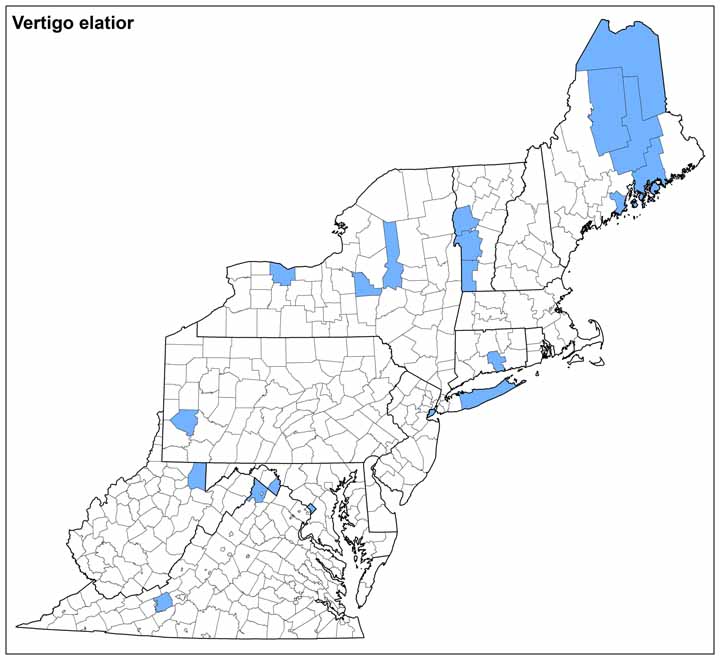Land Snails
.jpg)
Photo: Shell of Vertigo elatior, © Jeff Nekola.
Click photo to enlarge.
Vertigo elatior (Sterki, 1894) (not yet reported)
Family: Vertiginidae
Common name: Tapered Vertigo
Identification
Height: ~2.0 mm
Width: ~1.0 mm
Whorls: 5
This species is most similar to Vertigo ventricosa, with whom it shares a glossy shell luster, a pronounced indentation (sinulus) on the outer apertural wall, and no angular or infraparietal lamellae. It differs from V. ventricosa by having a more tapered shell with a less inflated body whorl, a more irregular shell surface, a stronger apertural callus, and a translucent rather than transparent shell (Nekola & Coles, 2010).
Ecology
Vertigo elatior occurs in well decomposed humid leaf litter and grass thatch in a variety of open and wooded wetland habitats, including coastal alvar, wet prairie, fens, wet meadows, tundra, and black ash, tamarack, northern white cedar and black spruce swamp forests. Although predominately a calciphile in the east, it tolerates acidic conditions in the upper Midwest. After rains, or on dewy mornings, individuals will adhere to a hand run through damp leaves (Nekola & Coles 2010).
Taxonomy
Synonyms for this animal’s name include Vertigo ventricosa elatior, Vertigo gouldii lagganensis, Vertigo gouldii loessensis.
Distribution
Vertigo elatior ranges from Newfoundland and the northern shore of the St. Lawrence west across the taiga to the southern shore of Hudson’s Bay and the Yukon. It ranges south to the panhandle of West Virginia, southern Ohio, and northeastern Iowa (Nekola & Coles, 2010). Its western range limit is not well understood because of uncertainty regarding the status of Vertigo idahoensis (Pilsbry, 1948). If V. idahoensis is simply a synonym, then V. elatior extends down the Rocky Mountains to southern New Mexico. If it is distinct, then the range of V. elatior likely terminates in the foothills of the Rockies in Alberta and Montana.
Vertigo elatior has not yet been reported from Virginia. However, given its presence in the ‘marl marshes’ near Charlestown, West Virginia, it is almost certainly present in the fens of the Shenandoah Valley.
NatureServe Global Rank: G5
NatureServe State Rank: SH
Jeff Nekola 9/2012
Range Map (click to enlarge)



